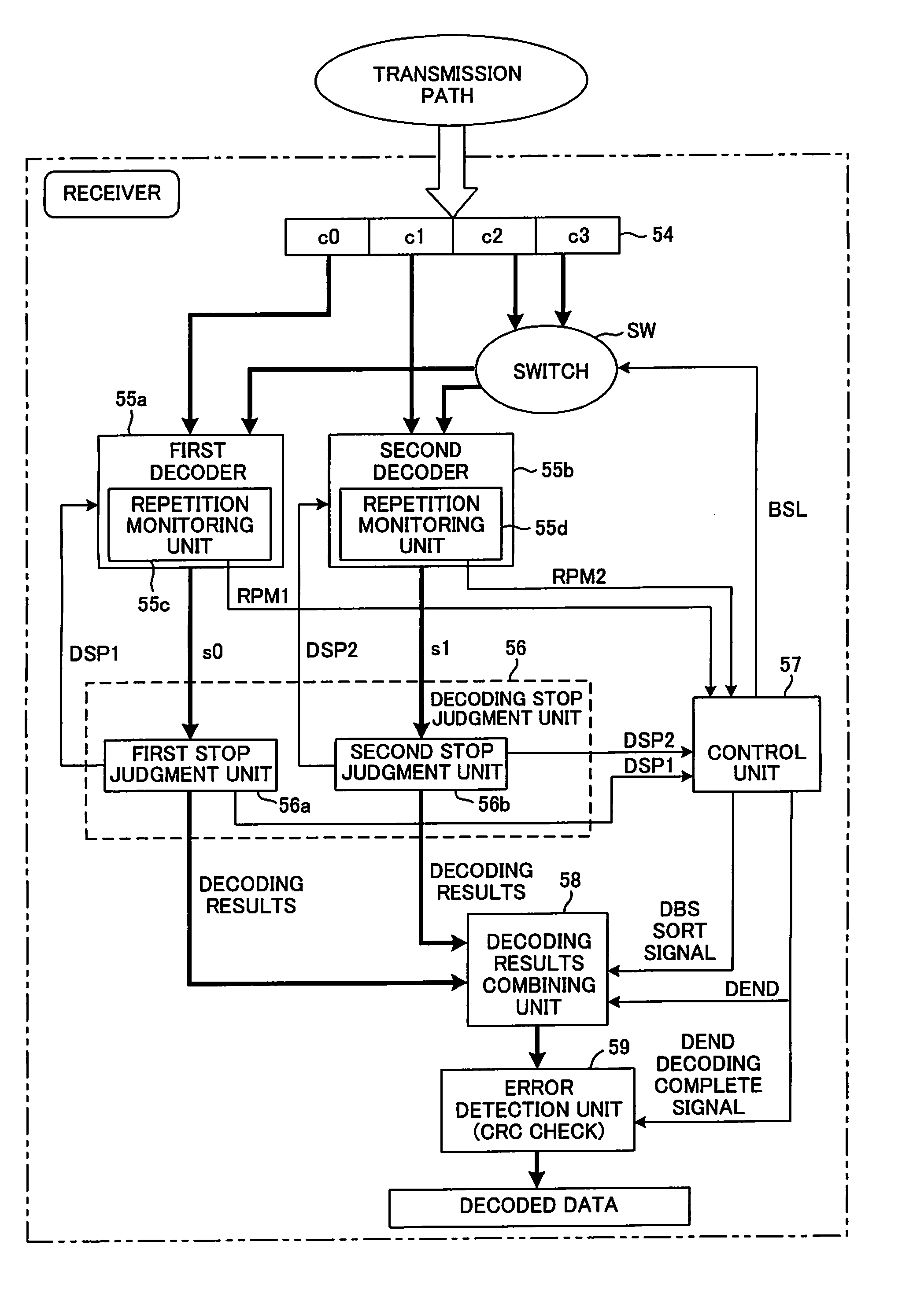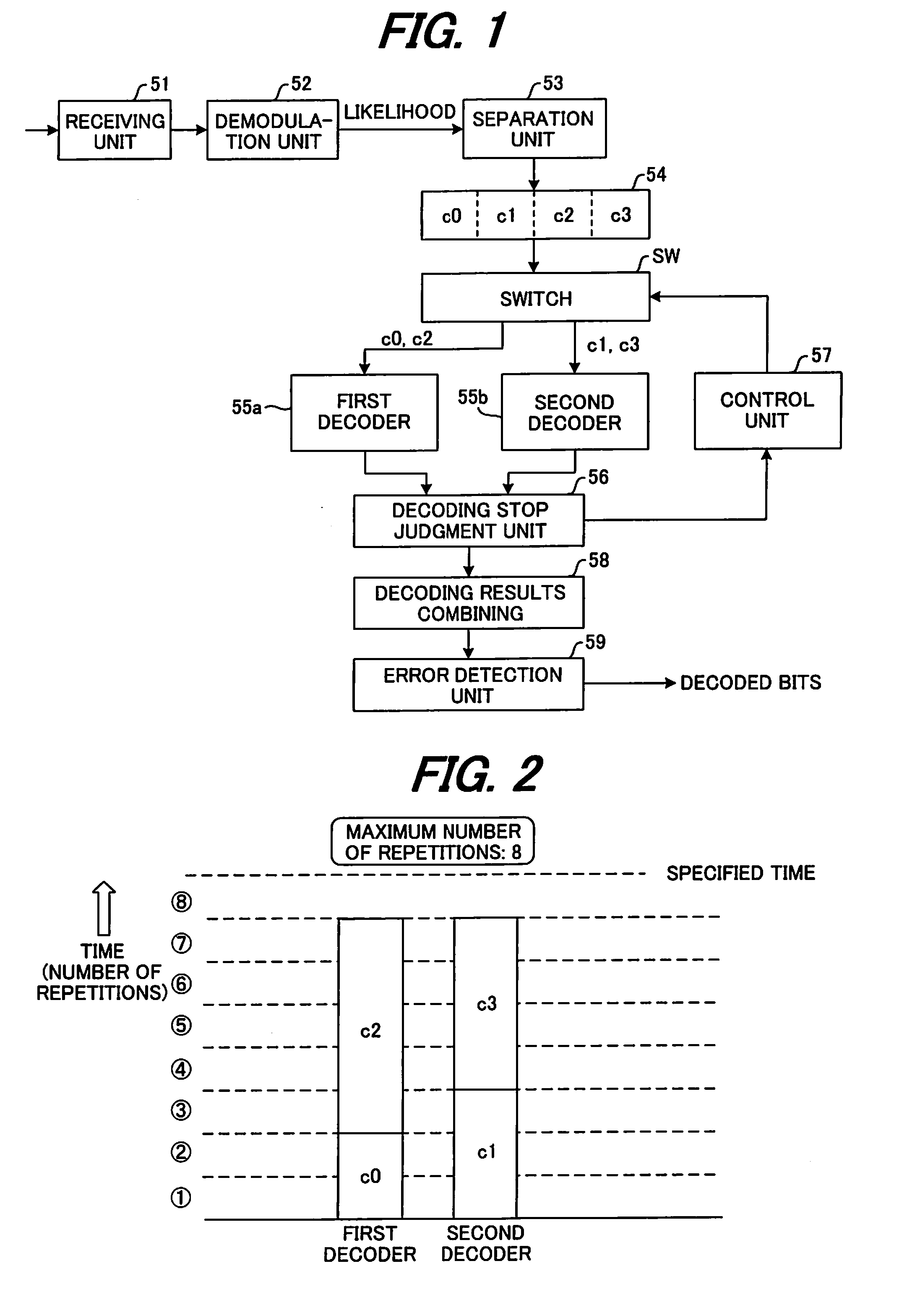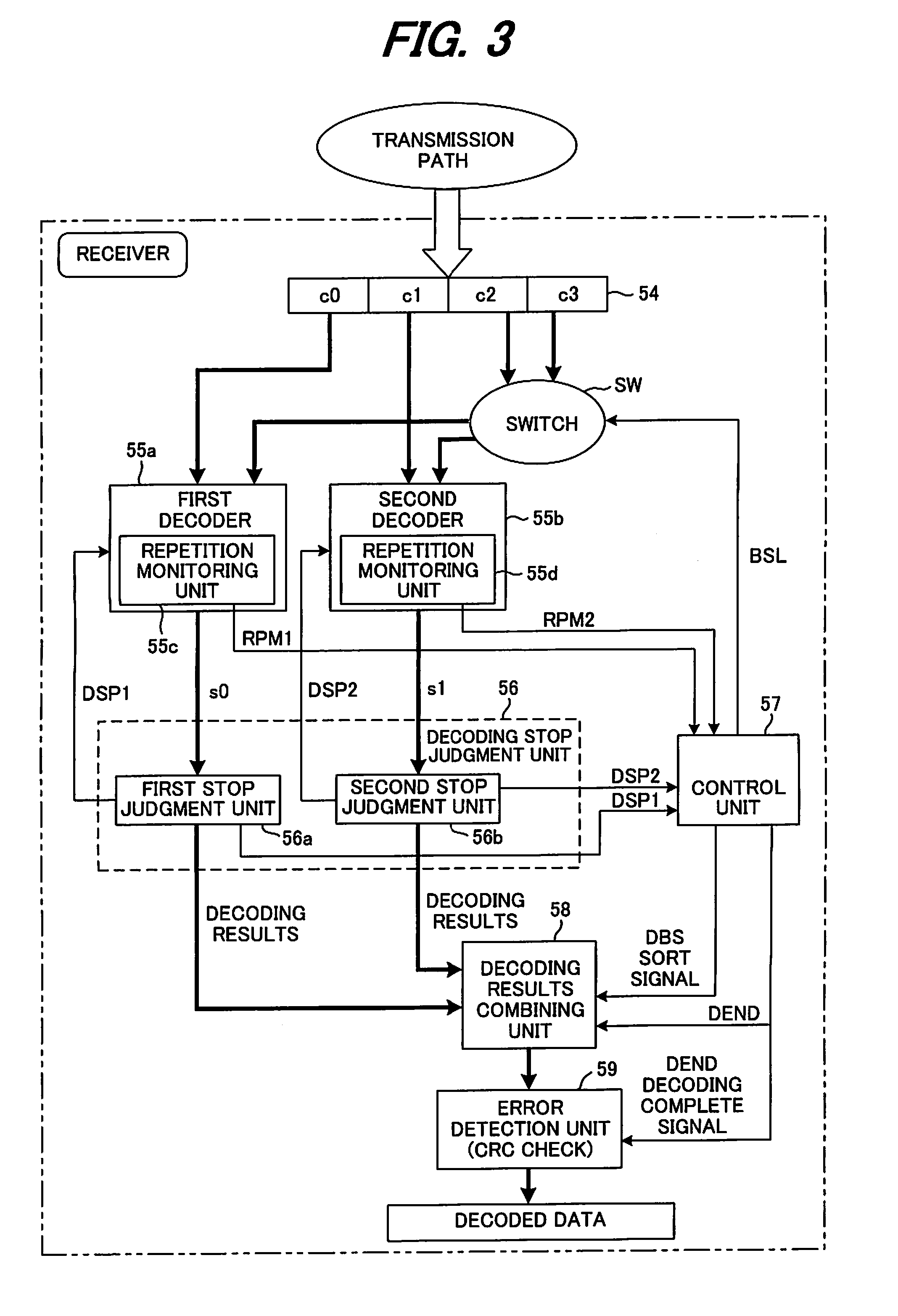Receiving device and decoding method thereof
a decoding method and receiving device technology, applied in the direction of coding, code conversion, fault response, etc., can solve the problems of large circuit scale, high consumption of power, long decoding process maximum number of repetitions, etc., and achieve the effect of reducing the number of mounted decoders
- Summary
- Abstract
- Description
- Claims
- Application Information
AI Technical Summary
Benefits of technology
Problems solved by technology
Method used
Image
Examples
first embodiment
(B) First Embodiment
[0065]FIG. 3 is a block diagram of the main parts of a receiving device of a first embodiment of the present invention, where the same reference numbers are used for parts that are the same as those shown in FIG. 1. The same is true for all of the embodiments, but in the first embodiment shown in FIG. 3, the receiving unit, demodulation unit and separation unit are omitted from the figure, however the construction is the same as that shown in FIG. 1
[0066]After likelihood data for code blocks c0 to c3 has been saved in a buffer 54, first and second decoders 55a, 55b fetch the likelihood data of two code blocks c0, c1 in order from the start, and simultaneously execute the decoding process. The maximum number of repetitions of the decoding process by the first and second decoders 55a, 55b is specified, for example 8 times respectively and internal repetition monitoring units 55c, 55d monitor whether the number of repetitions has reached 8, and input the monitoring ...
second embodiment
(C) Second Embodiment
[0076]FIG. 6 is a schematic diagram of the main parts of a receiving device of a second embodiment of the invention, where the same reference numbers are used for parts that are the same as those of the receiving device of the first embodiment shown in FIG. 3. The construction of this embodiment differs in that two switches, first and second switches 61a, 61b, are provided for selectively inputting the decoding results of the first and second decoders 55a, 55b to the decoding stop judgment unit 56 and decoding results combining unit 58.
[0077]When the conditions for stopping decoding have been met for all of the code blocks except for one remaining code block, the control unit 57 controls the switches 61a, 61b and inputs the decoding results of the last code block to the decoding results combining unit 58. After the decoding process for the final block, the decoding results combining unit 58 serially combines the decoding result of the final block with the decodi...
third embodiment
(D) Third Embodiment
[0085]FIG. 8 is a schematic diagram of the main parts of a receiving device of a third embodiment of the invention, where the same reference numbers are used for parts that are the same as those of the receiving device of the first embodiment shown in FIG. 3. The construction of this embodiment differs in that two switches, first and second switches 61a, 61b, are provided that selectively input the decoding results from the first and second decoders 55a, 55b to the decoding stop judgment unit 56 and decoding results combining unit 58.
[0086]FIG. 9 is a flowchart of the processing by a control unit 57 of this third embodiment.
[0087]The control unit 57 monitors whether decoding stop signals DSP1, DSP2 have been generated (step 201), and when they are not generated, makes reference to the monitoring results RPM1, RPM2 to check whether the number of times decoding has been performed by the first and second decoders 55a, 55b has reached the maximum number of repetition...
PUM
 Login to View More
Login to View More Abstract
Description
Claims
Application Information
 Login to View More
Login to View More - R&D
- Intellectual Property
- Life Sciences
- Materials
- Tech Scout
- Unparalleled Data Quality
- Higher Quality Content
- 60% Fewer Hallucinations
Browse by: Latest US Patents, China's latest patents, Technical Efficacy Thesaurus, Application Domain, Technology Topic, Popular Technical Reports.
© 2025 PatSnap. All rights reserved.Legal|Privacy policy|Modern Slavery Act Transparency Statement|Sitemap|About US| Contact US: help@patsnap.com



